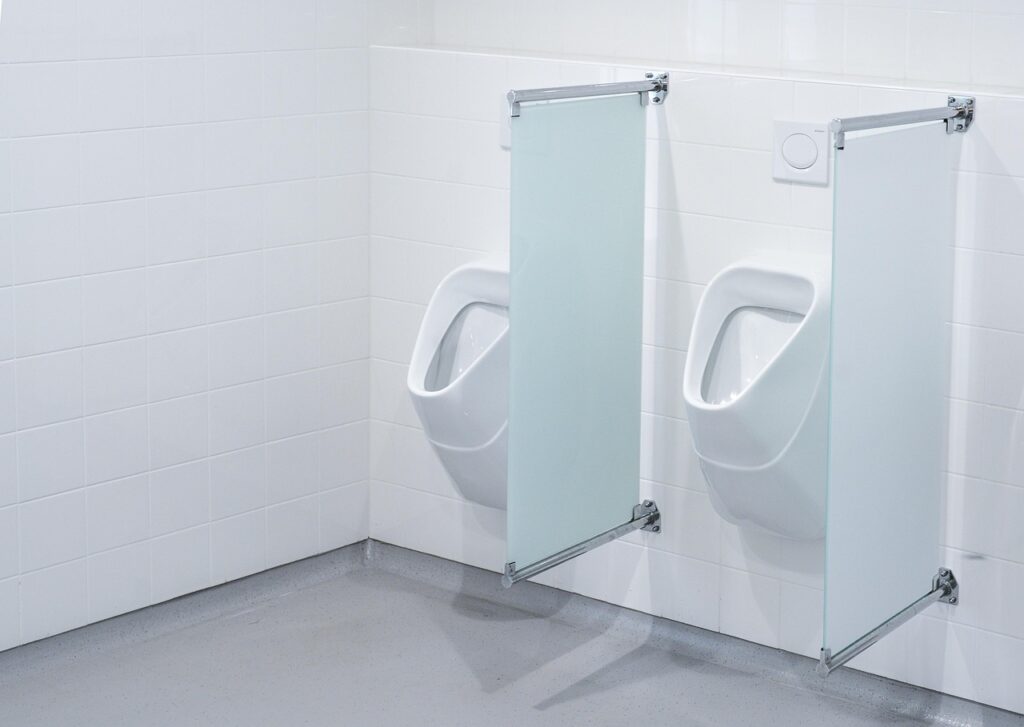🚻 Introduction: When Small Habits Turn Into Big Conversations
When you visit Korea, you might notice something unexpected: conversations about toilet seats, cleanliness, and even how people use the bathroom.
At first glance, this may sound trivial. But in Korea, these small habits — like whether to put down the toilet lid or whether men should sit while urinating — have become part of a broader cultural discussion about hygiene, manners, and mutual respect at home.
Over the last decade, the question of toilet etiquette in Korea has grown from a household matter into a social conversation.
Online forums, TV debates, and even YouTube channels have discussed whether it’s more hygienic for men to sit, whether closing the toilet lid really prevents germs from spreading, and how couples should negotiate these habits when living together.
For travelers and foreigners living in Korea, understanding this topic isn’t about rules — it’s about appreciating how seriously cleanliness, respect, and shared living are taken in Korean culture.
1️⃣ The Roots of Korean Bathroom Culture
Korea’s modern bathroom habits are shaped by a mix of Confucian values, urban lifestyles, and technological development.
🔹 Cleanliness as a Virtue
In traditional Korean culture, cleanliness was strongly linked to morality and respect.
Historically, Korean homes used ondol (heated floors), meaning people lived and ate close to the ground. Because of this, dirt or uncleanliness inside the home was strictly avoided.
Even today, Koreans remove shoes before entering a house, and bathrooms are viewed as “separate, private spaces” that must stay clean.
This mindset explains why topics like toilet seats and bathroom hygiene carry emotional and cultural weight — they represent respect for others sharing the same space.
2️⃣ The Modern Toilet Revolution
In the 1980s and 1990s, most Korean bathrooms were simple and functional.
By the early 2000s, Japanese-style bidets and smart toilets became popular, leading to rapid modernization of home bathrooms.
As bidet systems and hygiene features spread, so did the awareness of “toilet etiquette.”
People began to ask:
- Should the toilet lid be closed before flushing to prevent bacteria from spreading?
- Should men sit while urinating to avoid splashing?
- Who is responsible for cleaning shared bathrooms?
These questions became everyday conversations — not just in homes, but also online communities and talk shows.
3️⃣ Why the Toilet Lid Became a Symbol of Respect
Scientific studies played a big role in this debate.
Korean media reported that flushing with the lid open can spread fine water particles (aerosols) containing bacteria across the room.
As this information spread, many people began emphasizing the importance of “closing the lid” — not only for hygiene but also as a polite gesture.
In Korean homes, especially when living with family or a partner, putting the lid down came to represent consideration for others.
It’s similar to turning off the light after leaving a room or cleaning the sink after use — small acts that show you care about shared comfort.
💬 Many couples in Korea say, “Closing the toilet lid means closing the day with manners.”
For foreigners, this may seem like an exaggerated courtesy. But in Korea, such gestures signal harmony (조화, johwa) — one of the most valued aspects of daily life.

4️⃣ The Seated Debate: Why Some Men Choose to Sit
In recent years, Korean social media and talk shows began discussing whether men should sit while urinating.
This topic first gained attention for hygienic reasons — urine splash, odor, and cleaning convenience — but soon evolved into a cultural and even gendered discussion.
Hygiene Argument
Public health experts explained that standing urination can cause microscopic splashes that spread beyond the toilet area.
Korean cleaning companies and homemaking influencers shared videos showing how much residue could remain around the bowl and floor — shocking many viewers.
Gender Role Debate
Some women argued that if a man shares a bathroom, he should be considerate and sit to prevent splashing.
Meanwhile, some men viewed this as “personal freedom” and argued that sitting felt unnecessary or uncomfortable.
This disagreement became a mini “culture war” on forums like Naver and Kakao communities — but unlike Western online debates, Korean discussions tend to conclude with practical compromise:
🧩 “If you live alone, do as you wish. If you share a space, be considerate.”
That simple phrase — 배려 (baeryeo), meaning “consideration” — captures the spirit of how Korea approaches shared living.
5️⃣ Public Restrooms in Korea — What Travelers Should Know
Foreigners often find Korean restrooms surprisingly clean and well-equipped.
In major cities like Seoul and Busan, public restrooms are maintained by city governments and frequently cleaned.
Many include:
- Toilet paper inside stalls (unlike some other countries)
- Separate waste bins for sanitary items
- Automatic flush sensors and air dryers
- Bidet seats in newer facilities
However, you might also notice signs asking people to close the lid or not stand too close to the toilet — a reflection of ongoing hygiene campaigns.
📍 Seoul’s Mapo District even ran a campaign titled “Close the Lid, Save the Air” encouraging residents to shut toilet covers after flushing.
For travelers, the key takeaway is simple: follow the local etiquette — close the lid, keep the area dry, and don’t leave trash behind.
6️⃣ Domestic Habits and Relationship Etiquette
Among Korean couples, bathroom etiquette often becomes part of living together rules.
When two people move in, discussions about chores, cooking, and cleanliness include the bathroom.
Common couple “agreements” include:
- Always close the lid before flushing
- Keep the floor dry
- Spray air freshener or light a candle afterward
- Men clean the bathroom if they stand
- Alternate cleaning duties weekly
This “relationship hygiene contract” may sound funny, but it reflects how seriously Koreans take harmony in cohabitation.
On Korean talk shows, celebrities and relationship counselors often mention this issue — sometimes humorously, sometimes seriously — as part of “respecting each other’s private habits.”
🗣️ A famous Korean comedian once said,
“Love starts when you share food, but respect starts when you share a bathroom.”
7️⃣ Social Media and the Culture of Clean
YouTube, Instagram, and lifestyle blogs amplified these discussions.
Hashtags like #변기뚜껑 (toilet lid) and #앉아서소변보기 (sit-to-pee) trended briefly on Korean social media between 2018–2022.
Influencers posted comparisons between “before and after cleaning,” or short reels showing men adopting sitting habits as a “romantic gesture.”
Some men even joked, “I sit because I love peace more than pride.”
This humorous yet relatable tone helped normalize the practice for younger generations.
In modern Korean apartments, especially newlyweds or couples in their 20s–30s, shared responsibility and hygiene habits are now viewed as basic relationship etiquette — not gender issues.
8️⃣ Hygiene Science Behind the Debate
Let’s look at the science behind this everyday issue.
Korean health programs often cite data from Seoul National University and foreign research:
- Flushing with lid open: aerosol particles can travel up to 1.5 meters
- Standing urination: splash droplets can reach over 50 cm radius
- Bathroom humidity: high humidity amplifies bacterial survival rate
As Korea’s housing becomes more compact, bathrooms are often directly connected to bedrooms — meaning hygiene awareness becomes even more critical.
Thus, closing lids, sitting to urinate, and frequent disinfection have become normalized as “smart hygiene habits.”
9️⃣ Cultural Reflection — Why This Debate Matters
This isn’t just about toilets. It’s about how modern Korea negotiates between tradition, science, and shared life.
Older generations might view such debates as unnecessary — “Just keep it clean.”
Younger Koreans, however, see it as an expression of mutual respect and equality at home.
The broader social meaning is this:
Everyday manners reflect how people balance individual comfort and collective harmony.
That’s what makes Korean etiquette culture unique — it turns even ordinary habits into reflections of respect.
🔟 For Foreign Travelers — How to Adapt
If you’re visiting or living in Korea:
- Close the toilet lid before flushing (both at home and public restrooms).
- Keep the area dry — Korean bathrooms often double as shower rooms, so dry floors matter.
- Don’t flush trash like paper towels or wipes.
- Follow visual signs — pictograms will indicate rules clearly.
- Respect local customs — even if unfamiliar, small gestures of courtesy go a long way.
And if your Korean friends or hosts remind you to “close the lid,” don’t be offended — it’s simply part of showing care for the shared space.
🌿 Conclusion: Cleanliness, Consideration, and Connection
In Korea, a toilet seat isn’t just a piece of furniture — it’s a symbol of mutual respect and cleanliness.
The way people discuss it reflects deeper values: harmony at home, care for shared spaces, and attention to invisible details.
So next time you use a bathroom in Korea, remember — closing the lid, wiping the seat, or keeping it dry isn’t a strict rule. It’s a quiet way of saying, “I live with respect.”

